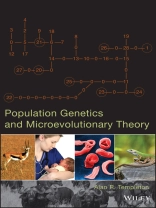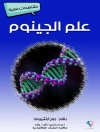The advances made possible by the development of molecular
techniques have in recent years revolutionized quantitative
genetics and its relevance for population genetics.
Population Genetics and Microevolutionary Theory
takes a modern approach to population genetics, incorporating
modern molecular biology, species-level evolutionary biology, and a
thorough acknowledgment of quantitative genetics as the theoretical
basis for population genetics.
* Logically organized into three main sections on population
structure and history, genotype-phenotype interactions, and
selection/adaptation
* Extensive use of real examples to illustrate concepts
* Written in a clear and accessible manner and devoid of complex
mathematical equations
* Includes the author’s introduction to background material as
well as a conclusion for a handy overview of the field and its
modern applications
* Each chapter ends with a set of review questions and
answers
* Offers helpful general references and Internet links
Tabella dei contenuti
Preface ix
1. Scope and Basic Premises of Population Genetics 1
Part I. Population Structure and History 19
2. Modeling Evolution and The Hardy-Weinberg Law 21
3. Systems of Mating 48
4. Genetic Drift 82
5. Genetic Drift In Large Populations and Coalescence 118
6. Gene Flow and Population Subdivision 168
7. Gene Flow and Population History 204
Part II. Genotype and Phenotype 247
8. Basic Quantitative Genetic Definitions and Theory 249
9. Quantitative Genetics: Unmeasured Genotypes 274
10. Quantitative Genetics: Measured Genotypes 297
Part III. Natural Selection and Adaptation 341
11. Natural Selection 343
12. Interactions of Natural Selection With Other Evolutionary Forces 372
13. Units and Targets of Selection 407
14. Selection In Heterogeneous Environments 453
15. Selection In Age-Structured Populations 497
Appendix 1. Genetic Survey Techniques 540
Appendix 2. Probability and Statistics 555
References 582
Problems and Answers 612
Index 681
Circa l’autore
ALAN R. TEMPLETON, PHD, is Charles Rebstock Professor of Biology at Washington University in St. Louis, with joint appointments in Genetics and Biomedical Engineering.












